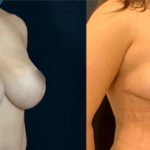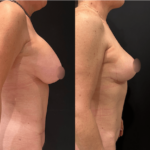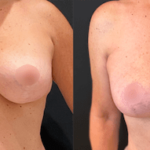Breast Implant removal in NYC
New York Breast Implant Removal Surgery
Many women want to have their breast implants removed. Patients may also want to remove the breast implant capsule. As you can imagine, the field of explant surgery in plastic surgery is rapidly evolving to better serve the patients requests. We at Neinstein Plastic Surgery identified the need for having a comprehensive program for breast implant and breast health management and recruited Dr. Anna Steve who has specialized training not just in aesthetic breast surgery but in breast cancer and breast disease reconstructive surgery. We wanted our patients who are women seeking breast implant removal or explant surgery in Manhattan, New Jersey, Connecticut and the world to have access to state of the art techniques, facilities, and compassionate empathetic care. The most common reasons patients in our Upper East Side Plastic Surgery practice seek breast implant removal are- Health Concerns. These include breast implant illness, breast cancer, breast disease, and capsular contracture
- They want to change the size of their breast
- They want to change the shape of their breast
Breast Implant Removal with En Bloc Capsulectomy
All breast implants in the body have a capsule. Some patients desire that the capsule be removed with the breast implant in one unit with a border of surrounding normal tissue. This means dissecting around the capsule and implant in every direction and separating this from the tissue that will remain. The en bloc capsulectomy is a technically more complex and demanding procedure compared to other surgical options for removing a breast implant and capsule and also involves removing some tissue that is normal. The benefit of the en bloc procedure is that the implant and implant material will never be exposed to the tissues because you are removing the implant and the capsule all in one unit. The downside of an en bloc capsulectomy procedure is that with the extensive amount of dissection needed to perform the procedure there is more tissue loss, bleeding, scarring, swelling, pain and potential life-threatening complications, as it relates to the procedure. When implants are placed under the muscle you can imagine that they are resting on top of the ribs. In en bloc capsulectomy this is the trickiest or most difficult area because the capsule often fuses to the ribs. This means it can be difficult to remove the capsule with the implant totally and completely without injury to the ribs. This is why when a patient is seeking breast implant removal with en bloc capsulectomy in New York, Manhattan, Connecticut, or New Jersey they should seek an expert who has the experience technically but also has the ability to create a meaningful relationship with the patient to work through their concerns and find a surgical solution that is both safe and goal oriented. Our surgeons who specialize in breast surgery and have a particular intellectual drive for breast harmony through surgery will empathically work with our patients on creating a surgical plan that addresses all of their health concerns, worries, and goals. Surgeons will often suggest en bloc capsulectomy procedures for patients who have a diagnosis of a breast implant associated cancer, disease, or health problem. One thing you may not know about en bloc capsulectomy in NYC or breast implant removal with en bloc capsulectomy in NYC – The surgical definition of en bloc requires the surgeon not just to remove the capsule and implant in one circumferential mass but also some extra healthy tissue around and or any masses or lymph nodes that are associated with the diagnosis that startedBreast Implant Removal and Capsule Removal
This is otherwise known as capsulectomy but not an en bloc capsulectomy. We understand that these names and descriptions of the procedures as it relates to removing a breast implant can start to get confusing. We can also imagine that someone who is not familiar with surgery may think that it is easy to remove an implant with its shell in one maneuvre like picking an apple out of a barrel. If you can imagine that apple having in some areas a cover that was so thin and flimsy that you could not even grab it without it falling apart and in some other areas that apple has a shell that is so thick and hard that it is stuck to the apple next door (like vecro on steroids!) you may start to get the picture or understand the complexity of a breast implant removal procedure. For many reasons your surgeon may suggest removing the capsule with your breast implant removal. Typically for breast implant rupture, breast implant capsular contracture, breast implant illness, and patient preference are indication to remove the capsule with the implant. In terms of differences when a surgeon performs a capsulectomy they will remove as much of the capsule with the implant as they can. Often in pieces as compared to keeping the entire capsule intact as in an en bloc capsulectomy. This is a much more common approach to removing breast implants and capsules because it causes less damage to the surrounding structures, less bleeding, less bruising, less pain, and less downtime for the patient.Breast Implant Removal and Partial Capsule Removal
Also called a partial capsulectomy, this is actually the most common implant related procedure performed by plastic surgeons especially in the case of capsular contracture. When a breast implant feels hard or the implant/breast changes in appearance this may be because of the capsule around the breast implant contracting otherwise known as capsular contracture. Many surgeons will remove the implant and potentially replace it but at the same time remove part of the capsule. It is common to remove the anterior capsule, this is like removing just the lid from a pot. It has been thought that removing part of the capsule will reduce the chances of capsular contracture from happening again. Since most breast implants are placed under the muscle the bottom of the capsule or the remainder of the pot is stuck to the ribs. As you can imagine removing the breast implant capsule from the ribs would be difficult and dangerous and should be undertaken in very specific scenarios by highly trained surgeons who are prepared to handle any surgical complication to the area.Breast Implant Removal Without Capsule Removal
Implant removal without a capsule removal is a possibility. For many patients whose main concern is the presence of the implant and their aesthetic desires have changes in as so much that they want the breast implant removed this can be a good option. You may be wondering if you are going to remove the breast implant why not just remove the capsule or at least part of the breast implant capsule. All surgery has risks and breast explant surgery is no different. More dissection in the breast during explant surgery can cause bleeding, pain, scarring, and could change the aesthetic appearance of the soft tissues of the breast.Breast Implant Removal Surgery with Neinstein Plastic Surgery in NYC
Once the implant is out a variety of different techniques can be used to maximize breast aesthetics after explant. These might include:Breast Lift (Mastopexy)
Breast lifts are used to redrape and reshape the tissue, as well as treat any droop or excess skin left after the implant is removed. Learn about breast lifts.Fat Grafting
Fat grafting is used to restore natural volume. For these cases special processing techniques are used to optimize fat retention. Special cannulas designed in the shape of the breast can be used to transfer the fat to the breast without any additional scars.New Implants
Implant exchange can be performed with a different size of implant or different type of implant (saline for silicone or vice versa).Up-to-Date Information on Silicone Breast Implants
In most cases, we use silicone breast implants. You may hear these implants referred to as the gummy bear or gel type. This newest generation of silicone implants are made of a highly cohesive (thick) silicone gel that doesn’t ‘spill’ if implants rupture.Are saline implants still used?
Saline implants have a silicone shell and are filled with salt water. Many women had saline implants placed because they were the only implants available when they had their breast surgery. In most cases saline implants are replaced by silicone implants because they have a more natural shape and feel, are lighter than saline alternatives, and have less risk of visible rippling. Saline implants are still available by patient request and are used in some cases. Any of these procedures can be done in combination. Some patients also choose a ‘wait and see’ approach. In these cases they choose to under removal alone and decision on whether any additional procedures are of interest to them after they have a chance to experience their new size and shape with implants removed.What happens to the implant and capsule that was removed?
The implant and capsule are inspected for any abnormalities during the procedure. Any tissue that is removed is sent to pathology for special testing to determine if there are any abnormalities that would be cause for further treatment or concerns.How do I know I don’t have breast implant related cancer or disease?
Just as all women begin screening with mammograms to allow for early identification of breast cancer, all women with breast implants should undergo regular imaging to evaluate their breast implants. Current guidelines recommend all women with silicone breast implants begin imaging with either MRI or ultrasound 5 years after they were placed and then continuing after 3 years thereafter. This imaging allows for monitoring of the implant and facilitates early detection of any implant- related problems. If you have any implant-related concerns, you should also contact your plastic surgeon for a follow-up appointment. More information about breast-implant associated anaplastic large cell lymphone (BIA-ALCL), breast-implant associated breast implant illness (BII) and squamous cell carcinoma (BIA-SCC) is included below.Up to Date Information on Breast Implant Related Cancer and Disease
Associated Large Cell Lymphoma (ALCL)
Breast-implant associated large cell lymphoma (BIA-ALCL) is a rare type of lymphoma associated with textured breast implants. The most common way breast-implant associated large cell lymphoma presents is with a late fluid collection called a seroma. If you are experiencing any implant related concerns, you should be evaluated by a plastic surgeon to come up with a strategy for further investigation The textured implant that was most highly associated with this lymphoma (Allgergan 410 model implants) have been recalled and are no longer available for use. If you have this type of implant, it is recommended that you have your implants removed. If you have any other type of textured breast implant, you may choose to monitor them rather than replace them. All women with silicione breast implants should begin monitoring of the implant with MRI or ultrasound beginning at the 5-year mark and then every 3 years after the implants are place. If you would prefer to have your implants replaced, they can be replaced with a similar sized, smooth round implant.Breast Implant Illness (BII)
Breast implant illness (BII) can include a wide range of symptoms: fatigue, joint pain, brain fog, headaches, rashes, dry eyes, memory and concentration problems. While scientific investigations are underway, the link between these symptoms and breast implants is still under investigation. Women experiencing these symptoms can develop them on any timeline after having breast implants. In some cases, removal of breast implants improves symptoms and in other cases it does not. To date there is no screening to determine who might be at risk for breast implant illness. ISquamous Cell Carcinoma (SCC)
Breast-implant associated squamous cell carcinoma (BIA- SCC) is a rare type of cancer that can develop within the implant capsule. It often presents with a mass that is associated with a fluid collection, which may cause visible asymmetry in the breast. There have been 16 cases of BIA-SCC identified wordwide as of September of 2021. Case examples Case 1 This woman had 700cc silicone implants placed in her 20’s and was no longer happy with them. She had a number of unexplained symptoms including fatigue and significant back pain. She chose to have her implants removed. A breast lift was performed to redrape and reshape her breast tissue after the implant was removed to reconstruct an aesthetic breast shape. She elected not to add any fat transfer for natural volume as she wanted to restore the natural slope to the breast. Before After This woman had saline implants placed in her 20’s and always felt they were too large for her frame. She chose to have her implants removed and replaced with fat transfer. A breast lift was perfumed and supported with an internal bra to restore an aesthetic shape to the breast after the implants were removed. Before AfterCase Examples
This woman had 700cc silicone implants placed in her 20’s and was no longer happy with them. She had a number of unexplained symptoms including fatigue and significant back pain. She chose to have her implants removed. A breast lift was performed to redrape and reshape her breast tissue after the implant was removed to reconstruct an aesthetic breast shape. She elected not to add any fat transfer for natural volume as she wanted to restore the natural slope to the breast.
Before
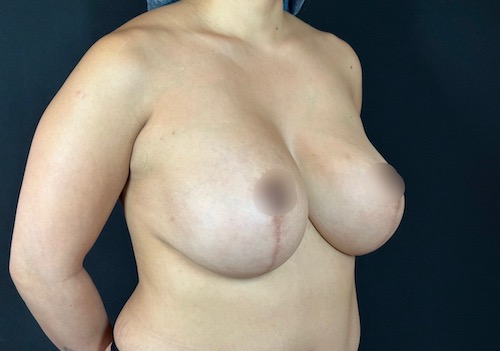
After
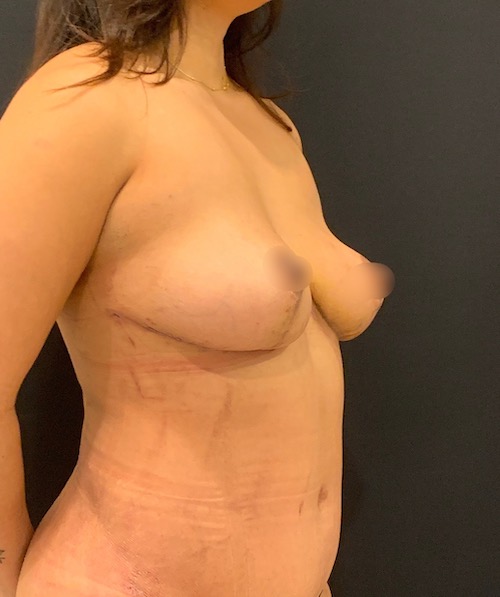
This woman had saline implants placed in her 20’s and always felt they were too large for her frame. She chose to have her implants removed and replaced with fat transfer. A breast lift was perfumed and supported with an internal bra to restore an aesthetic shape to the breast after the implants were removed.
Before
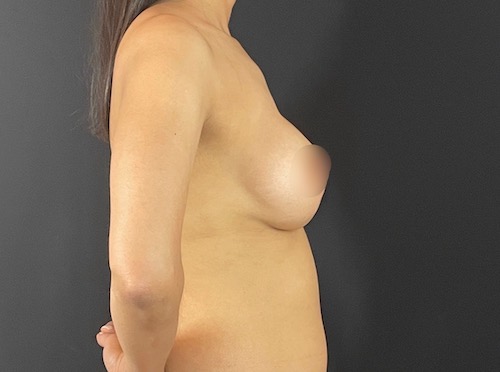
After
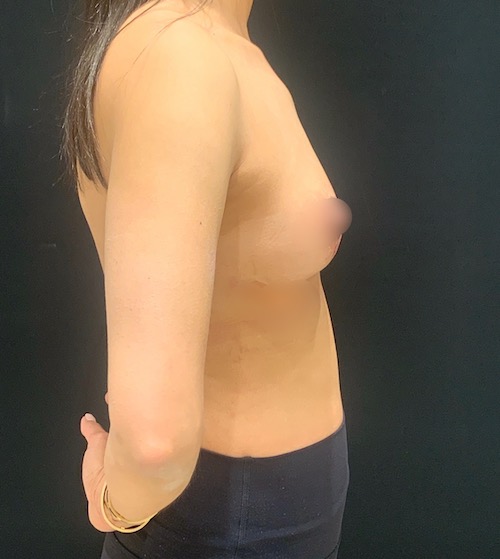
57 year old patient who felt her breasts were dropping over her 20 year old implants. She had a new found commitment to fitness and appreciation for couture clothing. She found that larger breasts were not in line with her current aesthetic.
We removed the implants and did an internal breast rearrangement and lift for a more youthful look!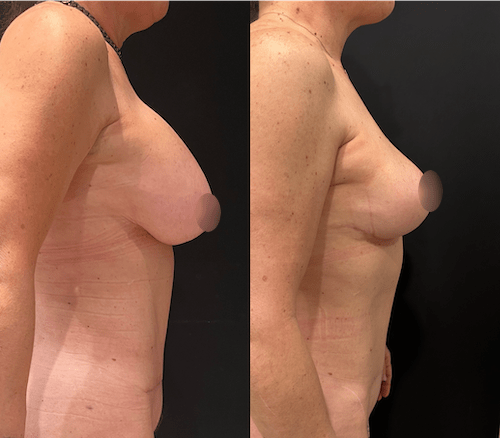
This 58-year old patient wanted a more natural look and feel to her breast after having breast implants for several decades. We were able to style her breasts by removing her breast implants and performing a Breast Lift with Fat transfer.
We removed the implants and did an internal breast rearrangement and lift for a more youthful look!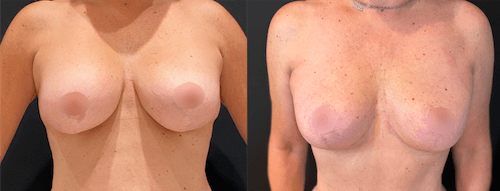
REAL RESULTS

212-249-0949



